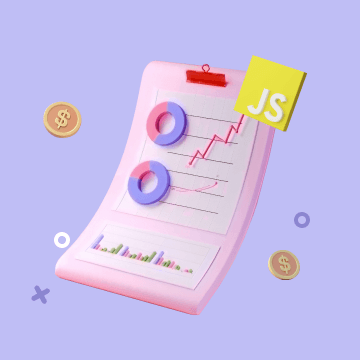
Beyond Fundamentals: Combining Event Tracking with AI Investing Tools
The short answer: Fundamental analysis alone tells you how strong a company’s financial health is — but without event tracking, you’ll miss the catalysts that actually move stock prices in the short and medium term. By combining both, especially with the help of AI-powered tools, you not only identify fundamentally strong companies but also anticipate when market-moving news will amplify or undermine that strength.
Why Fundamentals Alone Can Miss Market Catalysts
Fundamental metrics like revenue growth, net income, profit margins, and debt-to-equity ratios are critical for long-term investment decisions.
For example, when I ran AI-driven analysis across the entire U.S. market, the Magnificent 7 (Apple, Microsoft, Amazon, Alphabet, Meta, Nvidia, Tesla) all ranked highly — no surprise given their consistent multi-year growth patterns.
However, the market doesn’t always move in sync with fundamentals. I’ve held well-run companies that saw sharp price drops not because of deteriorating business health, but because of sudden external events — political changes, product recalls, regulatory shifts, or competitor announcements. Without real-time tracking of these events, even the best AI model using perfect financial data will fail to reflect reality.
The Case for Event Tracking in AI Stock Analysis
In one example from my own portfolio, I owned shares in a fundamentally strong casino operator.
The company’s balance sheet showed steady growth, debt reduction, and rising free cash flow — yet the stock spiked not when the quarterly report came out, but when it announced a partnership with a major overseas hotel chain.
This taught me three lessons:
- Events are catalysts — they can trigger reactions far faster than fundamental changes can be measured.
- AI without event inputs is backward-looking — relying solely on historical data to predict future price movement misses turning points.
- Sector context matters — the same event type can have different impacts depending on industry cycles and macro trends.
How AI Investing Tools Integrate Event Tracking
Modern AI-powered investing platforms now merge fundamental scoring with event-driven analysis. My typical workflow includes:
- Real-time news aggregation from trusted financial sources
- Inferred sentiment analysis — identifying tone shifts across articles, press releases, and earnings calls
- Event classification — separating corporate actions (M&A, product launches) from macro events (interest rate changes, trade agreements)
- Correlation mapping — measuring how similar past events affected comparable companies
One tool I’ve tested extensively, Stock News Reporter (powered by bika.ai), goes a step further by continually scanning multiple feeds, evaluating sentiment, and producing structured reports on company-level, sector-level, and market-level reactions.
Case Study: Tesla and the Event Tracking Gap
When I analyzed Tesla’s fundamentals in 2023–2024, the company scored strongly on revenue and market position — enough that a vanilla AI model ranked it among the better automotive/tech hybrids. But real-time event tracking painted a different picture:
- Declining EV sales in some major markets
- Rising competition from Asia’s mid-range EV makers
- Political controversies potentially affecting brand appeal
An AI tool without event awareness still leaned bullish, carrying forward optimistic sentiment from earlier quarters. By integrating live news and weighting recent developments more heavily, my adjusted model downgraded Tesla’s short-term outlook while still keeping its long-term fundamentals intact. That distinction guided my decision to reduce exposure until market sentiment stabilized.
Balancing Short-Term Event Impacts with Long-Term Fundamentals
The risk with event tracking is overreacting to noise — not every headline justifies a shift in strategy. My approach:
- Cross-check fundamentals — Ensure any reaction aligns with core metrics like growth, profitability, and leverage.
- Weight by sector volatility — In biotech, a single FDA decision can make or break valuation; in utilities, daily news often matters less.
- Use confidence scoring — AI should tag events with probabilistic impact estimates rather than blanket buy/sell signals.
By doing this, I avoid jumping in and out of positions based on transient sentiment while still staying ahead of major market movers.
Best Practices for Integrating Event Tracking into AI Investing
- Invest in multi-source sentiment analysis — Don’t rely on a single news API; diversity lowers bias.
- Run periodic bias tests — Check whether your AI tool leans too heavily on recent events or historical performance.
- Backtest event impact weightings — Use historical event-outcome data to refine AI decision rules.
- Document all triggers — Maintain a record of why buys/sells were made, matched with event and fundamental data.
Conclusion: The Competitive Edge of Event-Driven AI Analysis
In today’s fast-moving markets, fundamentals remain the bedrock of smart investing — but events are the sparks that ignite price movement.
By combining both through AI investing tools that merge rigorous financial analysis with real-time event and sentiment tracking, you gain a dual advantage: long-term stability from solid companies and short-term agility from timely catalysts.
The future of AI finance is clear — it’s not about choosing between fundamentals or events; it’s about weaving them together into a coherent, adaptive investing framework.

Recommend Reading
Recommend AI Automation Templates


Coming soon


